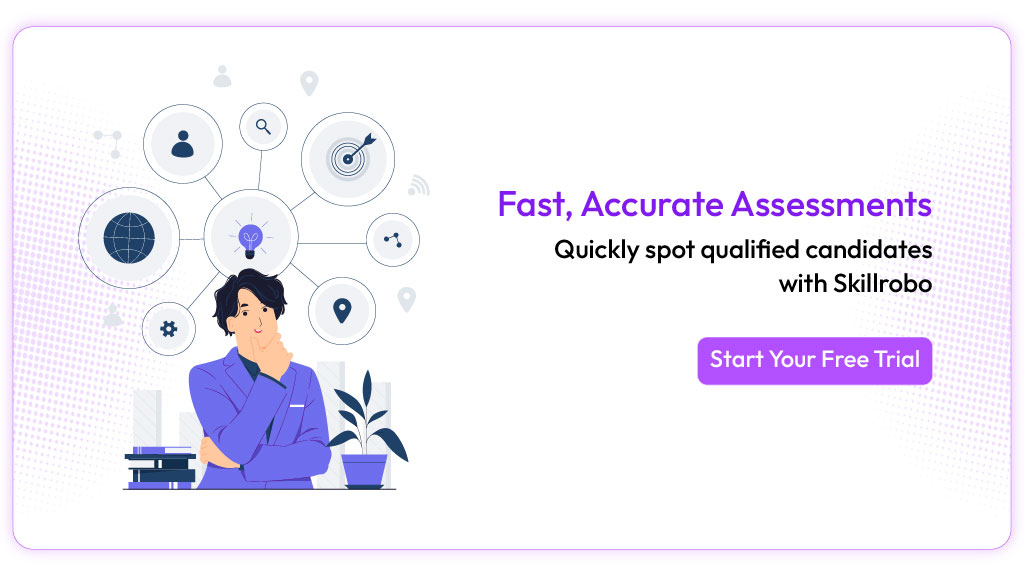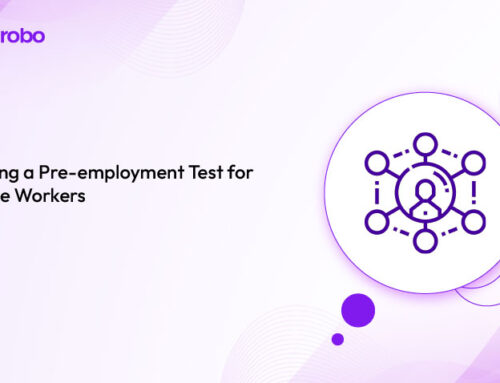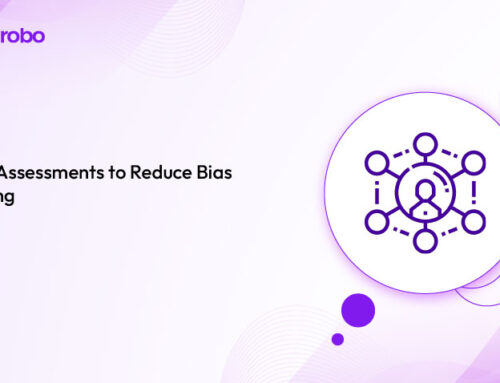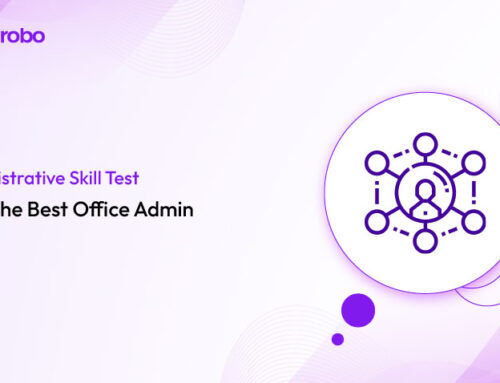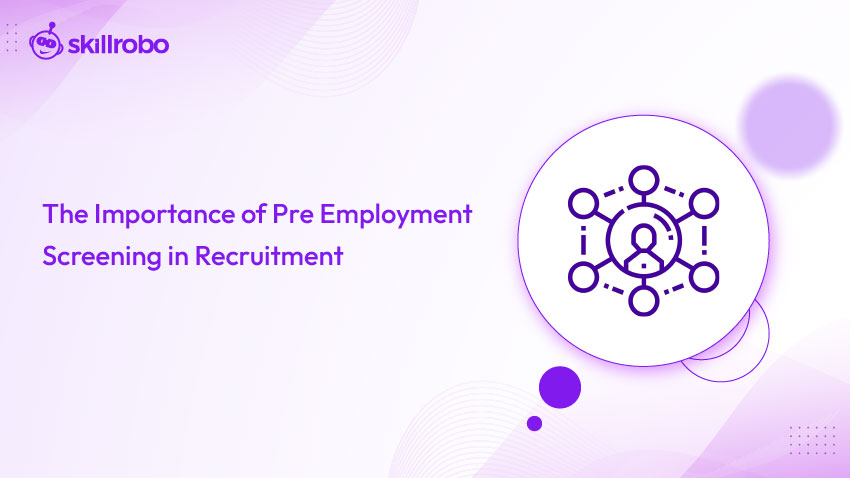
Key Takeaways
- Pre-employment screening ensures candidates align with job requirements, reducing hiring risks and improving long-term employee fit.
- Comprehensive assessments, including cognitive and behavioral evaluations, provide deeper insights into a candidate’s potential performance.
- Real-time analytics from screening tools enable data-driven hiring decisions, streamlining the recruitment process.
- Effective screening minimizes workplace risks by verifying skills, qualifications, and cultural alignment before onboarding.
Unlocking Recruitment Success with Pre-Employment Screening
Pre-employment screening has become a cornerstone of modern recruitment, enabling organizations to build high-performing teams in a competitive talent market. As roles diversify and remote work reshapes hiring, evaluating candidates’ skills, behaviors, and cultural fit is critical. Screening goes beyond resumes, offering a structured way to predict job success and reduce turnover. By identifying top talent early, businesses save time, cut costs, and promote fairness.
In this blog, we’ll explore why pre-employment screening is essential, its key benefits, and how tools like Skillrobo streamline the process for HR professionals and hiring managers.
Why Pre-Employment Screening Matters
Recruitment today requires precision to navigate a flood of applications across industries. Pre-employment screening provides a systematic way to assess candidates, ensuring only those with the right skills and traits advance. For example, a logistics firm might test analytical skills for supply chain roles, while a creative agency evaluates innovation for design positions. Without screening, organizations risk hiring mismatches, which can disrupt workflows and morale.
Screening also fosters equity in hiring. Traditional resume reviews can favor polished applications over raw talent, introducing bias. Structured assessments focus on measurable abilities, leveling the playing field. This is vital in high-stakes sectors like healthcare, where competence ensures patient safety, or finance, where ethical decisions protect trust. By prioritizing screening, businesses align hiring with operational and ethical goals.
1. Aligning Skills with Job Demands
Effective hiring starts with ensuring candidates’ skills match the specific demands of a role, and pre-employment screening makes this possible through tailored evaluations. A software developer needs proficiency in languages like Python or Java, while a customer service rep requires strong interpersonal skills to handle client inquiries. Screening allows recruiters to test these exact competencies, avoiding the pitfalls of assuming a resume reflects true ability.
For instance, a retailer hiring for inventory management might use a test to assess numerical accuracy and attention to detail—skills critical for minimizing stock errors. Tools for evaluating candidate skills enable customization, letting recruiters design assessments that align with job-specific needs, whether it’s coding for tech roles or communication for sales positions. This precision ensures hires can perform their duties effectively from day one, reducing the risk of onboarding someone who looks qualified but lacks the practical expertise required, ultimately enhancing productivity and job fit.
2. Reducing Turnover Costs
Hiring the wrong person doesn’t just waste time—it hits the bottom line hard. The Society for Human Resource Management estimates replacing an employee can cost up to five times their salary, factoring in recruitment, training, and lost productivity. Pre-employment screening mitigates this by identifying candidates who are not only skilled but also likely to stay long-term, assessing both technical abilities and cultural alignment.
Consider a tech firm hiring a systems analyst: a screening test on problem-solving and adaptability can reveal if a candidate thrives under pressure, a key indicator of retention in fast-paced roles. Assessments for cognitive abilities on Skillrobo provide data to spot these traits early, helping avoid hires who might leave after a few months due to mismatched expectations or capabilities. By investing in screening, companies cut turnover costs and build stable teams, saving resources that would otherwise be spent on constant rehiring cycles.
3. Promoting Fair Hiring Practices
Subjectivity in hiring—like favoring candidates with impressive resumes or alma maters—can unintentionally exclude diverse talent with untapped potential. Pre-employment screening counters this by focusing on performance metrics rather than pedigree, ensuring every applicant gets a fair shot based on ability. This shift is crucial for building inclusive teams that bring varied perspectives to the table.
Take a call center hiring for support reps: a scenario-based test on problem-solving and empathy lets self-taught candidates shine, even without formal credentials, over those with polished applications but weaker skills. Solutions for fair hiring practices emphasize measurable outcomes, reducing bias and opening doors for underrepresented groups. This not only aligns with ethical hiring goals but also drives innovation by tapping into a broader talent pool, strengthening organizational resilience and creativity.
4. Ensuring Regulatory Compliance
In regulated industries, hiring unqualified candidates isn’t just inefficient—it’s a legal risk. Pre-employment screening verifies that candidates meet mandatory standards, protecting organizations from compliance violations. Financial firms might test knowledge of anti-money laundering protocols to ensure ethical handling of transactions while manufacturing roles could require awareness of safety regulations to prevent workplace incidents.
For example, a healthcare provider hiring nurses might screen for patient care protocols to comply with industry guidelines, ensuring patient safety isn’t compromised. By confirming qualifications and competencies upfront, screening acts as a safeguard against penalties or reputational damage. Role-specific assessments can be tailored to include these checks, giving recruiters confidence that hires meet both job and regulatory demands, and maintaining trust and operational integrity.
The Role of Comprehensive Assessments in Screening
Screening isn’t just about technical skills—it’s about understanding a candidate’s full potential. Comprehensive assessments blend cognitive, behavioral, and leadership evaluations to provide a complete picture. Cognitive tests measure problem-solving, vital for dynamic roles. Behavioral assessments reveal traits like teamwork or resilience, shaping team dynamics. Leadership evaluations spot strategic thinkers, even in entry-level positions. This approach ensures hires excel now and grow later.
Industries benefit from tailored assessments. A tech startup might screen for coding and stress management, while a hospitality business tests empathy and multitasking. Combining assessment types uncovers insights resumes miss. Platforms offering evaluations for call center roles show how targeted tests meet sector-specific needs.
1. Cognitive Tests for Decision-Making
In roles where decisions shape outcomes—like project management or data analysis—cognitive ability is non-negotiable. Cognitive assessments evaluate how candidates analyze information, solve problems, and make sound choices under pressure. These tests go beyond rote knowledge, testing the mental agility needed for complex, evolving tasks.
A marketing firm, for instance, might use a logical reasoning test to see how a candidate plans a campaign with limited data, ensuring they can strategize effectively. Cognitive evaluations on Skillrobo measure these skills through puzzles or scenario-based questions, identifying hires who can navigate ambiguity and deliver results. This ensures technical or creative roles are filled with individuals who think critically, a cornerstone of high-performance teams.
2. Behavioral Tests for Team Alignment
Cultural fit isn’t a buzzword—it’s a retention driver. Behavioral assessments dig into how candidates interact, resolve conflicts, or adapt to challenges, revealing their alignment with team values. In collaborative environments, these traits determine whether a hire strengthens or disrupts group dynamics.
A healthcare provider might prioritize empathy in a behavioral test, asking candidates to respond to a patient complaint scenario to ensure compassionate care. Assessments for personality traits explore these qualities, helping recruiters build cohesive teams where collaboration thrives. By screening for behaviors like resilience or teamwork, companies ensure hires not only fit the job but also the culture, reducing friction and boosting long-term success.
3. Leadership Screening for Potential
Identifying leadership potential early pays off, even for junior roles. Leadership assessments evaluate initiative, vision, and decision-making, spotting candidates who can grow into strategic roles. This forward-thinking approach builds a pipeline of talent ready to step up when opportunities arise.
A sales team might screen for persuasion and goal-setting in an entry-level hire, knowing these traits signal future managers. Competency evaluations on Skillrobo include scenarios—like leading a mock project—to assess these qualities, ensuring hires bring ambition and direction. This not only fills immediate needs but also invests in internal growth, reducing reliance on external hires for leadership positions down the line.
4. Validating Practical Skills
Resumes claim expertise, but practical assessments prove it. These tests confirm candidates can execute core tasks—whether it’s coding a feature or optimizing a logistics route—ensuring they’re ready to contribute. Validation prevents overhiring skilled-but-unprepared candidates or under hiring those who lack depth.
A logistics firm might test route optimization with a mock delivery schedule, verifying efficiency and accuracy under time constraints. Skillrobo’s role-specific assessments tailor these checks to job demands, ensuring hires translate knowledge into action. This step bridges the gap between theory and practice, setting up new employees for immediate impact rather than prolonged onboarding.
Leveraging AI for Smarter Screening
Artificial intelligence has transformed screening, making it faster and fairer. AI tools generate job-specific questions, ensuring relevance. Proctoring maintains test integrity for remote candidates, while real-time analytics deliver instant insights. For HR professionals, this reduces manual work and sharpens focus on candidate engagement. AI also tackles bias, a key hiring challenge. By prioritizing skills over subjective factors like names, AI promotes diversity.
A McKinsey study found AI-driven recruitment increased diverse hires by 25%. This builds teams with varied perspectives. Platforms offering solutions for fair hiring practices highlight how technology drives equity.
1. AI Questions for Relevance
AI ensures screening stays relevant by crafting questions that mirror real-world tasks, enhancing assessment accuracy. For a customer success role, AI might generate a conflict resolution scenario based on common client issues, testing practical skills in context rather than generic aptitude.
Assessments for communication skills leverage AI to produce these targeted challenges, ensuring they reflect current workplace demands—like drafting a clear client email. This keeps tests aligned with industry trends, giving recruiters confidence that candidates are evaluated on the exact competencies their roles require, improving fit and performance from the start.
2. Proctoring for Trust
Remote hiring opens doors to talent but risks dishonesty—like using external help during tests. AI proctoring restores trust by monitoring for irregularities, such as tab-switching or unusual response patterns, ensuring results reflect true ability. This is especially critical for roles where precision is paramount.
In an accounting position, where accuracy in calculations is non-negotiable, proctoring confirms a candidate’s math test score is authentic. Seyarc AI on Skillrobo flags suspicious activity, maintaining integrity across distributed assessments. This builds recruiter confidence, ensuring hires bring verified skills to the table, free from doubts about test authenticity.
3. Analytics for Efficiency
Manual review of test results slows hiring, especially with large applicant pools. Real-time analytics solve this by delivering instant performance data—scores, completion times, or skill breakdowns—streamlining decisions. This efficiency is a lifeline for time-sensitive recruitment, like seasonal or high-volume roles.
A retailer gearing up for holiday hires can use analytics to rank cashier candidates by speed and accuracy, cutting days off the process. Reporting tools provide these insights, enabling quick comparisons and prioritizing top performers. This data-driven approach keeps workflows agile, ensuring opportunities aren’t lost to delays.
4. Reducing Bias with Data
Human bias—like favoring familiar names or prestigious schools—skews hiring. AI counters this by focusing on objective metrics, such as test scores or task completion, over subjective cues. This data-first approach ensures fairness, opening doors to talent that might otherwise be overlooked.
A tech firm screening coders might ignore resume gaps and focus on programming test results, uncovering self-taught experts. AI-driven assessments prioritize performance, aligning with diversity goals by minimizing unconscious bias. This builds teams with varied backgrounds, enhancing creativity and problem-solving through equitable selection.
Overcoming Common Screening Challenges
Screening offers clear benefits but isn’t flawless. Candidates may feel anxious, viewing tests as hurdles. Some try to game personality assessments. Poorly designed tests can miss role nuances, leading to mis-hires. Addressing these requires thoughtful design and transparency.
To ease anxiety, organizations can offer practice questions or explain test goals. A design firm might clarify its creativity test evaluates practical skills, not theory. Validated assessments ensure relevance. Customizable tools help recruiters craft fair, engaging tests.
1. Easing Test Anxiety
Tests can intimidate, especially for candidates new to screening, risking skewed results if nerves overshadow ability. Easing this starts with clear instructions—like “solve this scenario”—and reasonable time limits, creating a positive experience that respects applicants’ effort while gathering data.
A financial firm might cap a math test at 25 minutes and provide a sample question, helping candidates relax and focus. Skillrobo offers a user-friendly design that supports this, ensuring assessment challenges without overwhelming them. This balance boosts completion rates and ensures hires reflect true potential, not just test-taking comfort.
2. Ensuring Test Accuracy
Irrelevant or outdated tests lead to poor hires— a generic leadership quiz won’t suit a creative director, just as a typing test falls short for an executive assistant. Accuracy demands alignment with role-specific needs, ensuring assessments measure what matters most.
A logistics coordinator test might focus on route planning over abstract logic, reflecting daily tasks. Customizable assessments let recruiters tailor questions, avoiding one-size-fits-all pitfalls. This precision ensures candidates are evaluated on relevant skills, reducing the chance of onboarding someone mismatched to the job’s demands.
3. Balancing Tests with Interviews
Screening isn’t a standalone solution—it shines brightest alongside interviews. Tests provide data, but conversations reveal personality and motivation. Pairing a customer service test with a role-play, for example, confirms skills holistically, blending quantitative and qualitative insights.
A retailer might test cashier speed, and then interview to gauge friendliness, ensuring a well-rounded hire. Assessments complement this dual approach, offering data to guide discussions. This balance prevents over-reliance on tests, capturing the full candidate profile for smarter, more confident decisions.
4. Keeping Candidates Engaged
Lengthy or dull tests push talent away, especially in competitive markets. Streamlined assessments—focused on key skills and concise in format—maintain interest while collecting essential data, ensuring candidates stay invested rather than dropping out mid-process.
A design firm might limit a creativity test to three targeted tasks, respecting time while assessing innovation. Efficient design keeps tests engaging, balancing depth with brevity. This approach retains top applicants, ensuring the screening process feels like an opportunity, not a chore, and preserves the talent pipeline.
Conclusion
Pre-employment screening empowers recruiters to hire talent that drives success, minimizing risks and boosting equity. Skillrobo enhances this with role-specific assessments, cognitive and behavioral evaluations, AI-driven questions, and real-time analytics. For HR professionals seeking precision, Skillrobo delivers efficiency and insight. Sign up on Skillrobo today to transform your hiring with smarter screening solutions.

